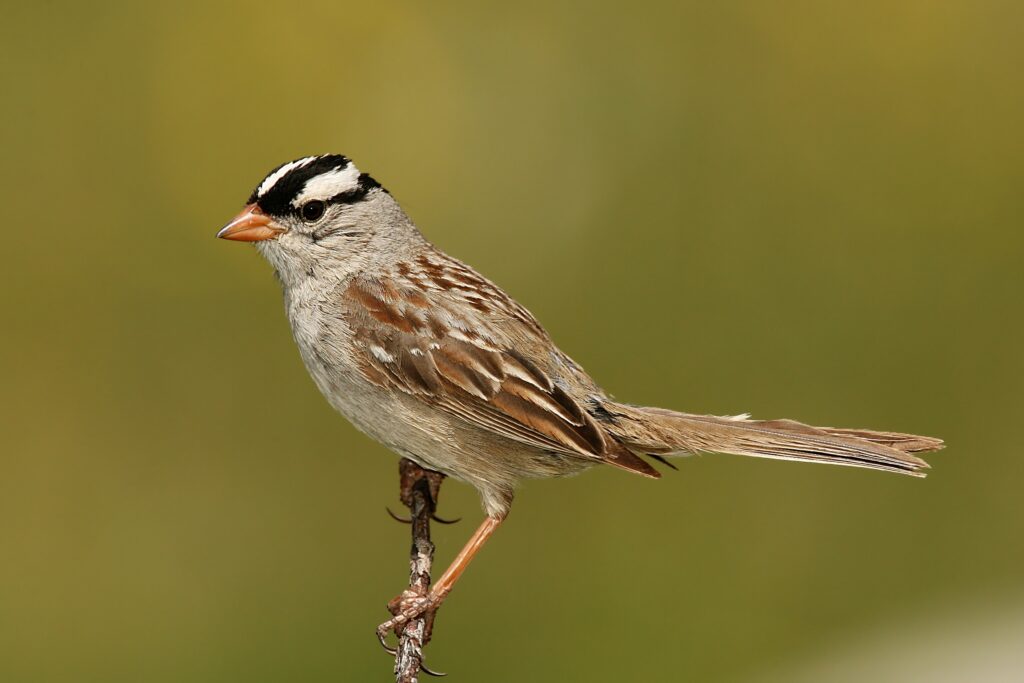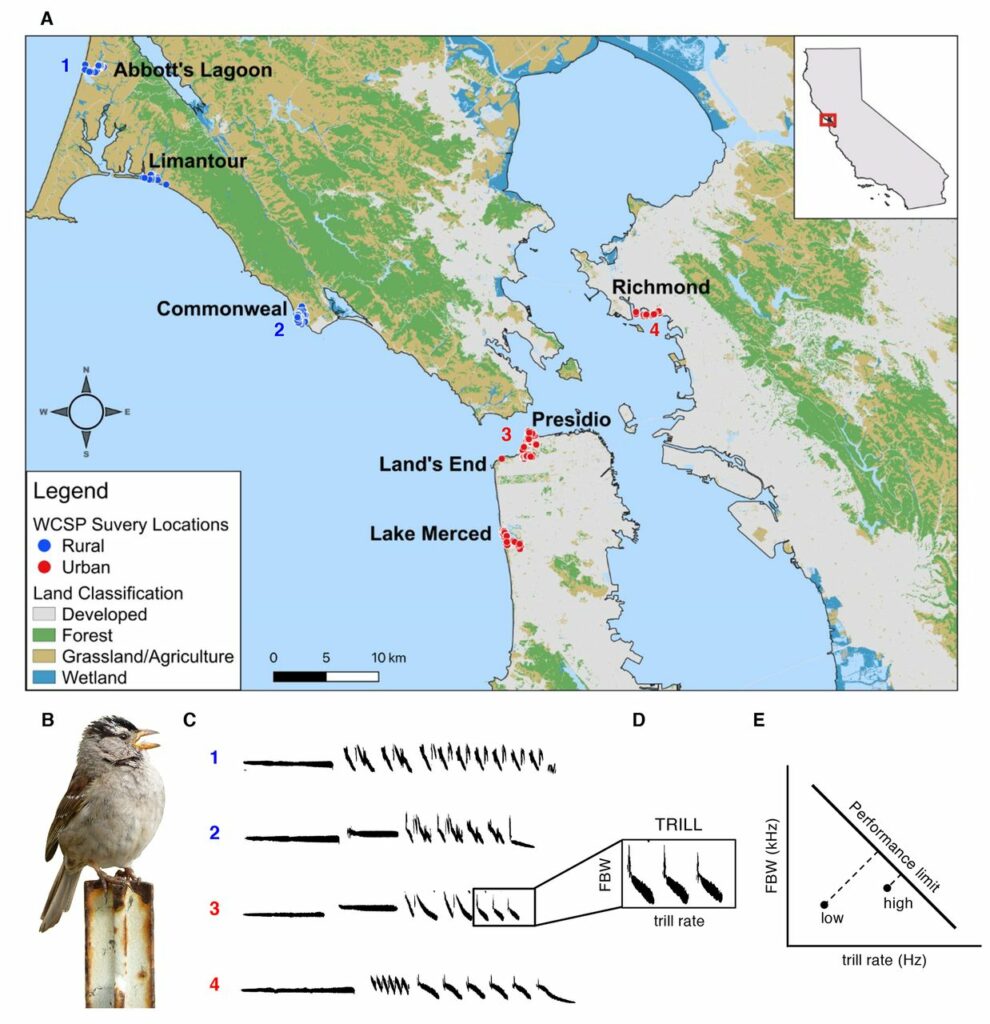Birds have very distinct calls that don’t typically change, making it easy for bird watchers to recognize a species. But the tunes can actually shift over time, according to a new study. During the lockdown, with less traffic and movements, bird songs have sounded different, at least in the United States.

Worldwide, elective quarantine and stay-at-home orders have reduced the use of public spaces and transportation networks, especially in cities. The restrictions in public movement led to rarely observed behaviors in animals, such as coyotes crossing the normally heavily trafficked Golden Gate Bridge in San Francisco.
Elizabeth Derryberry and her team studied white-crowned sparrows in San Francisco for more than two decades, comparing their songs with old recordings. They found that when traffic levels increase, the lowest frequencies of sparrow’s songs rise so as not to be drowned by the sound of traffic. But their top frequencies remain the same.
For many bird species, such altered songs are less effective at attracting females and deterring rivals. Birds sing louder in noisy environments, with studies showing the resulting stress can accelerate aging and disrupt their metabolisms. Noisy environments can also prevent them from hearing their own chicks.
When the pandemic lockdown started in March, Derryberry asked herself how the sparrows were responding to the quieter conditions. She couldn’t travel to San Francisco but her colleagues were there to record the birds in the city and the surrounding areas. And the findings were very surprising.

“People were right that birds did sound different during the shutdown and they filled the soundscape that we basically abandoned,” Derryberry told BBC News. “As we moved out of the soundscape, the birds moved in and I think this tells us something about just how big an effect we have on birdsong and on communication, especially in cities.”
The recordings showed sparrows were singing 30% softer, on average, than before the lockdown. But they were also singing songs with bandwidths typical of birds recorded in the 1970s. The combination of less background noise and the better signal from wider bandwidth allowed males to hear each other from twice as far away as before.
The white-crowned sparrows, with distinctive white and black stripes on their heads, are found across much of the US and Canada, where their songs have been widely studied. Different sub-species across the country sing slightly different songs, known for the sweet, whistling introduction, a succession of jumbled whistles, and a trill near the end.
The finding is “good news from the point of view of the birds,” Sue Anne Zollinger, an ornithologist at Manchester Metropolitan University who was not involved in the work, told Science. The findings show that species with more flexible behaviors can adapt to suit changes in their environment quite quickly.
The study was published in the journal Science.









